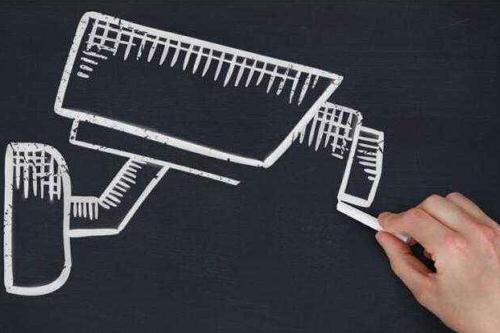Love the Way You Walk
迷恋你的步伐
Listen carefully to the footsteps in the family home, especially if it has wooden floors unmuffled by carpets, and you can probably work out who it is that is walking about. The features most commonly used to identify people are faces, voices, finger prints and retinal scans. But their “behavioural biometrics”, such as the way they walk, are also giveaways.
仔细听家里的脚步声,特别是家里铺的是木地板而又没有地毯消声的话,你大概可以辨认出是谁在走动。最常用于身份识别的体征是面容、声音、指纹和视网膜扫描。但步态等“生物行为特征”也是可循之迹。
Researchers have, for several years, used video cameras and computers to analyse people’s gaits, and are now quite good at it. But translating such knowledge into a practical identification system can be tricky – especially if that system is supposed to be covert. Cameras are often visible, are fiddly to set up, require good lighting and may have their view obscured by other people. So a team led by Krikor Ozanyan of the University of Manchester, in England and Patricia Scully of the National University of Ireland, in Galway have been looking for a better way to recognise gait. Their answer: pressure-sensitive mats.
近年来,研究人员一直在用摄像机和计算机分析人的步态,目前技术已经相当成熟。但要将这些知识转化为实用的识别系统并不容易,尤其是还需要实现隐蔽性。摄像机往往容易被看到,安装也较为繁琐,又需要有足够的光线,而且镜头还可能被他人遮挡。因此,英国曼彻斯特大学的克里科尔·奥赞扬(Krikor Ozanyan)和爱尔兰国立大学戈尔韦的帕特丽夏·斯高莉(Patricia Scully)带领的团队一直在探索更好的识别步态的方法。他们的解决方案是使用压敏垫。

In themselves, such mats are nothing new. They have been part of security systems for donkeys’ years. But Dr Ozanyan and Dr Scully use a sophisticated version that can record the amount of pressure applied in different places as someone walks across it. These measurements form a pattern unique to the walker. Dr Ozanyan and Dr Scully therefore turned, as is now commonplace for anything to do with pattern recognition, to an artificial-intelligence system that uses machine learning to disentangle and recognise such patterns.
压敏垫本身并不是什么新发明,长久以来一直是安保系统的一部分。但奥赞扬和斯高莉使用的是更精密的压敏垫,可以在有人走过时记录步伐在不同位置产生的压力值。这些测量数据构成了步行者独有的步态模式。于是,两位研究人员按照如今识别模式的普遍做法,把数据输入一套人工智能系统,运用机器学习来梳理并识别这些模式。
It seems to work. In a study published earlier this year the two researchers tested their system on a database of footsteps trodden by 127 different people. They found that its error rate in identifying who was who was a mere 0.7%. And Dr Scully says that even without a database of footsteps to work with the system can determine someone’s sex (women and men, with wide and narrow pelvises respectively, walk in different ways) and guess, with reasonable accuracy, a subject’s age.
这看来行得通。在今年早前发表的一项研究中,两位研究人员运用127人的足迹数据测试了该系统。他们发现,系统识别身份的错误率仅为0.7%。斯高莉说,即使不搭配使用足迹数据库,系统也能确定受试者的性别(女性骨盆宽,男性骨盆窄,因而行走方式不同),并可以还算准确地估计出其年龄。
A mat-based gait-recognition system has the advantage that it would work in any lighting conditions – even pitch-darkness. And though it might fail to identify someone if, say, she was wearing stilettos and had been entered into the database while wearing trainers, it would be very hard to fool it by mimicking the gait of an individual who was allowed admission to a particular place.
压敏垫步态识别系统的优点是可以在任何光照条件下工作,即使一片漆黑也没问题。如果数据库之前输入的是某人穿运动鞋时的步态,当她换成穿高跟鞋走路时,系统可能就无法识别了。但是,如果想模仿某人的步态来欺骗系统以获准进入特定地点会非常困难。
The latest phase of Dr Ozanyan’s and Dr Scully’s project is a redesign of the mat. The old mats contained arrays of individual pressure sensors. The new ones contain grids of optical fibres. Light-emitting diodes distributed along two adjoining edges of a mat transmit light into the fibres. Sensors on the opposite edges (and thus the opposite ends of the optical fibres) measure how much of that light is received. Any pressure applied to part of the mat causes a distortion in the fibres and a consequent change in the amount of light transmitted. Both the location and amount of change can be plotted and analysed by the machine-learning system.
奥赞扬和斯高莉的研究项目的最新进展是经过重新设计的压敏垫。原来的垫子包含由单个压力传感器组成的阵列。新的垫子则包含多组光纤网格。分布在垫子相邻两条边上的发光二极管将光传输到光纤中。安装在对面两条边上(也就是光纤的另一端)的传感器测量接收到的光量。施加到垫子上某处的任何压力都会引起光纤变形,进而导致传输光量的变化。机器学习系统可以识别并分析变化发生的位置和变化的量。
Dr Ozanyan says that the team have built a demonstration fibre-optic mat, two metres long and a metre wide, using materials that cost £100 ($130). They are now talking to companies about commercialising it. One application might be in health care, particularly for the elderly. A fibre-optic mat installed in a nursing home or an old person’s own residence could monitor changes in an individual’s gait that presage certain illnesses. That would provide early warning of someone being at greater risk of falling over, say, or of their cognition becoming impaired.
奥赞扬说,该团队已制成了一块两米长、一米宽的演示用光纤垫,材料成本为100英镑(130美元)。他们正与多家公司洽谈,希望将其商业化。医疗保健或许会是应用领域之一,特别是在照护老年人方面。将光纤垫安装在养老院或老人自己家中,可以监测一个人步态的变化,预测某些疾病。这将提供早期预警,例如提醒某人较有可能摔倒或出现认知受损。
Gait analysis might also be used as a security measure in the workplace, monitoring access to restricted areas, such as parts of military bases, server farms or laboratories dealing with hazardous materials. In these cases, employees would need to agree to their gaits being scanned, just as they would agree to the scanning of their faces or retinas for optical security systems.
步态分析也可作为工作场所的安保措施,用于监控限制区域的人员进出,例如军事基地、服务器农场,或处理危险品的实验室。在这些情况下,员工需要同意系统扫描自己的步态,就像同意光学安保系统扫描自己的面部或视网膜那样。
Perhaps the most intriguing use of gait-recognition mats, though, would be in public places, such as airports. For that to work, the footsteps of those to be recognised would need to have been stored in a database, which would be harder to arrange than the collection of mugshots and fingerprints that existing airport security systems rely on. Some people, however, might volunteer for it. Many aircrew or preregistered frequent flyers would welcome anything that speeded up one of the most tiresome parts of modern travel.
不过,步态识别垫最吸引人的用途可能在公共场所,例如机场。要实现这一点,被识别者的步态资料需要被提前存储到数据库中,而这会比机场现有安全系统所倚赖的面部照片和指纹更难收集。但有些人可能会自愿提供。任何革新,若能加速安检这一现代出行中最烦人的环节之一,许多空勤人员或预先登记的飞行常客都会欢迎它。
英文、中文版本下载:http://www.yingyushijie.com/shop/source/detail/id/882.html








